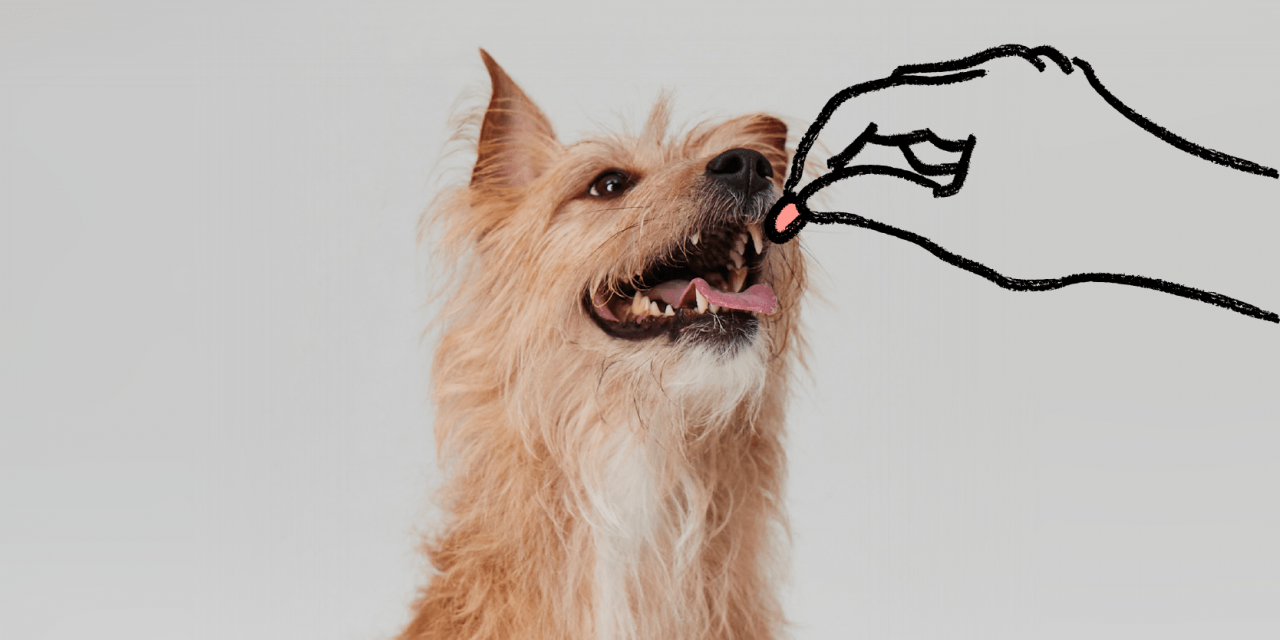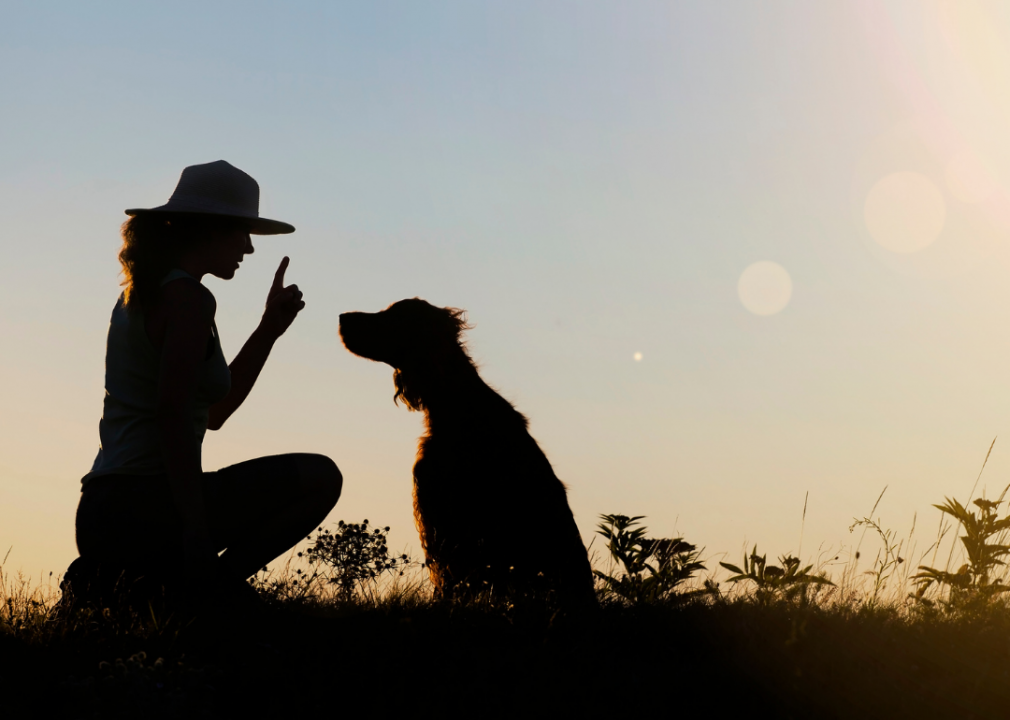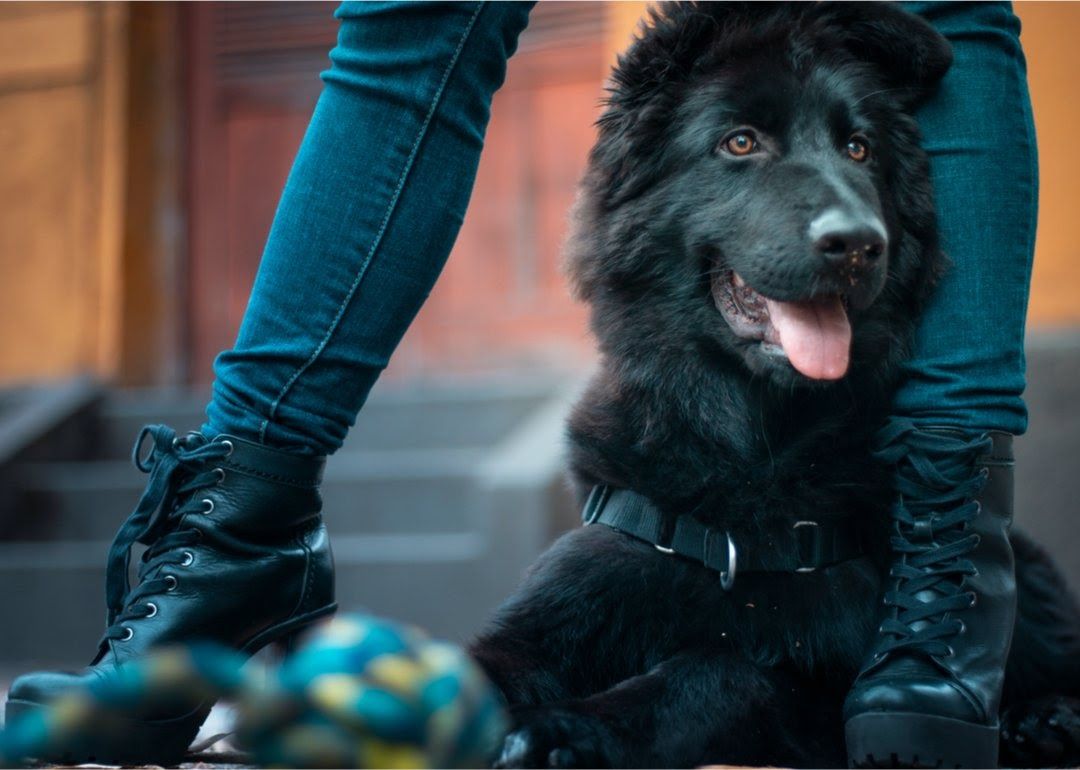First, that joyous second if you deliver a new pet dwelling for the first time. She’s a sprightly 7 weeks outdated, frisky and slobbery. She’s simply come from a extremely moral breeder the place her early puppyhood was uneventful. Pleased and well-adjusted, she bounces over the brink into your home and into your coronary heart.
Now the second situation: Your canine is three years outdated, and he or she’s becoming a member of your dwelling after two-and-half years in an abusive family adopted by a number of months in an animal shelter. The place the pet’s thoughts had all of the malleability of an toddler, the rescue canine is a bit set in its methods. The place the pet was unburdened and stress-free, the rescue canine is laden with anxieties stemming from a traumatic previous.
Both method, now it is time for coaching — and the second situation is more durable. Coaching a bright-eyed pet is difficult sufficient. However coaching a shelter canine — even one which comes pre-equipped with some fundamental coaching — is commonly a distinct animal. Whether or not your new adopted canine suffers from an abusive previous or is merely reeling from the stress of a shelter keep and the transfer to a new dwelling, they’re nearly definitely experiencing concern and anxiousness. And in the event that they’re an older canine, their age carries challenges of its personal.
Learn on to be taught the do’s and don’ts of coaching a rescue canine.

Study About Your Canine
In the case of coaching a rescue canine, one of the vital essential steps comes earlier than any, properly, coaching. Earlier than you even undertake your most popular pup, you must pose detailed inquiries to the type professionals at your native animal shelter. Certainly, any shelter price its bark ought to be capable of give you a minimum of some details about your new canine, and sometimes quite a bit.
Shelter professionals ought to be capable of inform you about your pup’s veterinary historical past, and even have some documentation readily available relating to issues like previous vaccinations and well being situations. They need to additionally be capable of inform you in regards to the canine’s earlier properties and house owners, and the way the canine behaved whereas dwelling on the shelter.
This data is extraordinarily essential. It provides you with a way of your canine’s likes or dislikes, whether or not they have a historical past of trauma, and what may set off anxiousness or behavioral points. It is also a good concept to learn the way a lot coaching the pup has already had. Some rescue canines have already been educated to some extent; all of it relies on how outdated the canine is and the way accountable the earlier house owners had been.
The underside line: Earlier than your new pooch even trots into their new dwelling, you must know simply what it’s going to take to practice them, and what the largest obstacles will likely be.

Plan Forward
When you’ve obtained a greater understanding of what makes your pup tick, it’s time to make plans. (It’s fairly outstanding how a lot preparation you need to do earlier than your furry good friend even units foot in your dwelling.) Far too typically — maybe as steadily as 20 % of the time — adoptive pet mother and father return their new canines to the shelters from whence they got here. That quantity would go down a complete heck of rather a lot if each new pet mum or dad had been completely ready.
Canine-proof Your House
Listed below are some suggestions for making a dog-safe dwelling:
- Maintain free wires out of attain
- Maintain poisonous vegetation and meals out of your canine
- Be sure medicines, lotions and cosmetics are safely saved
- Clear the ground of the storage to eliminate chemical substances like antifreeze
- Be sure heating and air con vents are lined appropriately
- Put away any choking hazards — e.g. the toys of younger kids
Make Positive You Have the Proper Meals and Treats on Hand
Should you deliver a new canine dwelling from a breeder, it’s protected to say you’ll want meals and treats designed for a pet. However grownup canines and senior canines have completely different wants with regards to energy and protein, and their meals displays that.
Simply be certain you purchase the precise meals and treats in your furry good friend’s age group.
Oh, and the good people at your pup’s shelter might be able to inform you what meals your canine has responded favorably to up to now. In truth, in the event you introduce your canine to a brand new model of meals and treats and so they don’t seem like consuming, it’s doable that returning them to the eating regimen they’d on the shelter will kickstart their urge for food.
Make a schedule
You’d be properly suggested to map out your pup’s routine forward of time, from walks to feedings. All canines thrive on routine — however with rescue canines it is particularly essential.
Talking of which…

Routine Is Key
Even the most recent and happiest of canines can profit from a robust routine. However the stakes are particularly excessive with a rescue canine, who is probably going making an attempt to beat a anxious and chaotic previous. As soon as upon a time, your canine might have lived in a busy or abusive dwelling surroundings. She might have been a stray. Or she might have had a number of completely different house owners.
Even in the perfect case situation, when a loving household is pressured for one motive or different to ship their pup to a accountable shelter, the new dwelling will nonetheless be welcoming a pup who simply hung out in a shelter (not essentially the most calming of environments), and who now should regulate to a brand new household and surroundings.
Any pup on this situation wants a agency, even inflexible routine. It’s the one factor that can assist them depart problematic behaviors behind. When a canine is used to chaos and unpredictability, a continued life of unpredictable day-to-day experiences is actually assured to perpetuate — and even enhance — stress and anxiousness ranges. That makes coaching a lot, a lot more durable.
Right here some key routines you must lock into place forward of time:
- Plan the Time and Length of Walks
- Plan the Timing and Measurement of Meals
- Plan the Time and Length of Playtimes

Use Rewards — By no means Punishment
Rewards-based coaching is at all times the finest method to show canines new behaviors. Meaning treats, reward and encouragement — by no means corrections, punishments or raised voices. Use constructive actions, not destructive ones.
Listed below are some issues you must at all times keep away from throughout coaching:
- Aversive gear, like prong collars or e-collars
- Yelling
- Hitting, grabbing or pinching
- …Just about some other destructive motion.
That is particularly essential with rescue canines. Punitive coaching methods will solely yield extra anxiousness, extra concern, extra distrust, and presumably extra aggression. And it’s extremely doubtless that your canine is already scuffling with a minimum of a point of anxiousness, which signifies that punishment could also be notably traumatic.

Begin with the Fundamentals (Even when They’ve Been Skilled Earlier than)
Thankfully, many rescue canines come outfitted with some coaching. However be mindful: A canine that’s bounced from a earlier dwelling to a shelter can neglect issues within the interim. Plus, life of their earlier dwelling might have been completely different from life in your humble abode. Possibly their earlier mother and father taught “sit” however not “come.” Or possibly their earlier proprietor allow them to bounce on dwelling room furnishings or eat desk scraps, whereas you’d prefer to implement stricter guidelines.
In any occasion, it isn’t a good suggestion to practice your canine in solely the areas the place they clearly have extra to be taught. As annoying because it sounds, you must begin by coaching your rescued pup with fundamental instructions and behaviors, even those they appear to grasp already. (If it turns into clear on the outset that your pup already has already mastered the artwork of the heel (or the artwork of the sit), you possibly can transfer on rapidly.
However in the event you don’t solid the widest doable web firstly, it’s possible you’ll miss some fairly essential areas of coaching the place your canine has extra to be taught than you initially realized. Should you overlook the fundamentals, your canine might find yourself with an incomplete patchwork of data and abilities.

Home Coaching: Accidents Can Nonetheless Occur
Be mindful: Even a beforehand educated rescue canine can have accidents within the home. In truth, it’s just about to be anticipated at first — your canine has simply been by way of a anxious transition.
Now, to deliver again a operating theme: Don’t yell or punish. Simply do what you’d with a model new pet: Reward your canine and provides them treats after they do issues proper. Be sure you’re strolling them sufficient. And place pee pads on the ground of your dwelling, a minimum of at first, if want be.
Be mindful: With an grownup rescue canine, inappropriate potty habits in a new dwelling is normally because of stress. It doesn’t essentially imply they’ve forgotten their earlier coaching. Should you do your finest to practice them in a stress-free method, the issue might go away rapidly. However, punishing or yelling at anxious or fearful canines will solely make it likelier that they proceed to do their enterprise indoors.

Crate Coaching: Making a Secure House
Canine crates get a foul rap. Positive, some new house owners is likely to be uncomfortable with confining their canine to a small house — but it surely’s solely damaging in the event that they break the rule we hold emphasizing right here: Don’t use crating as a type of punishment.
It’s best to consider your crate as a protected place in your pup. In truth, canines which have skilled vital stress and anxiousness might have essentially the most to achieve from crate coaching. For these canines, crate coaching can create a protected, sheltered house that’s for them and solely them — and which may be one thing they’ve by no means had earlier than.
Listed below are a number of good guidelines of thumb on the highway to efficient crate coaching:
- Choose a crate that’s the precise dimension — not too massive or too small in your pup
- Line the crate with a delicate blanket
- Depart the crate door open so your canine could make their very own determination to go inside or depart
- Have your canine eat a few of their meals and treats contained in the crate in order that they affiliate the crate with constructive issues
- Don’t enhance the period of time they’re spending within the crate till they’ve demonstrated that they’re completely comfy and safe inside it

Coaching an Abused or Traumatized Canine
On the earth of canine coaching, there’s little that’s harder — or extra high-stakes — than coaching a canine who’s been abused or traumatized. At the beginning you’ll must earn your pet’s belief — and that takes time, persistence and kindness.
Canines with a historical past of abuse or excessive anxiousness might even want the assist of a skilled canine coach or behaviorist. You may contemplate looking for a licensed canine behaviorist if:
- Your canine received’t cease barking at inappropriate occasions — for example, in response to loud noises, when the doorbell rings, after they see folks or different canines, or out of jealousy
- Your canine constantly reveals aggression, particularly when consuming — a habits often known as “useful resource guarding”
- Your canine suffers from extreme separation anxiousness that triggers behaviors similar to fixed barking or family destruction
A canine who suffers from from previous trauma or abuse may even develop into aggressive or harmful. The earlier you’re taking intensive steps to right problematic behaviors, the better it will be to maintain issues from getting out of hand. In some excessive circumstances, it might merely be unimaginable to make constructive strides with out assistance from knowledgeable coach.

Parting Thought: Keep away from Extremes
Many canine house owners which have rescued a furry good friend from a anxious life will do one in all two issues: Pamper them to attempt to make up for his or her powerful experiences, or be overly strict to attempt to right ingrained behavioral issues. Neither of those is an efficient technique.
Dad and mom of latest rescue canines must arrange guidelines, boundaries and routines. However they want to take action in a constructive surroundings full of affection and rewards, and by no means punishment. That’s the one method to practice a rescue canine successfully.
,
,

